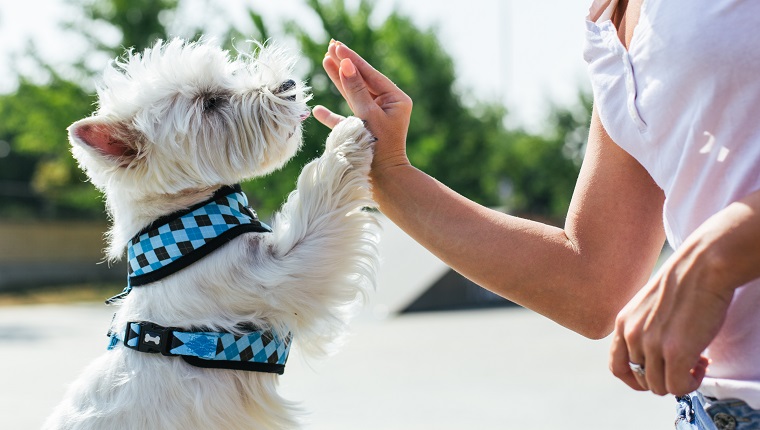If you’ve recently adopted a dog and have begun to research training methods and tips, you might have come across the term consent conditioning or cooperative care. But what exactly do these terms mean? And how can you successfully teach them to your dog?
Well, in short, consent conditioning is about allowing your dog to feel comfortable and secure while carrying out certain commands and tasks. For example, if your dog feels anxious about you trimming their nails, you can teach them to “consent” when they feel more relaxed.
Veterinarians sometimes refer to this as “cooperative care.” When your dog goes to the vet, they can “consent” to the vet’s handling, which can make them feel more in control and at ease. This makes the vet’s job easier and keeps your dog in a calmer state.
It’s a different approach than forcing or demanding your dog to follow specific commands even when they don’t feel at ease. Here’s what you need to know about consent conditioning for your dog.
What Exactly Is Consent Conditioning?
It’s best to think about consent conditioning as a training method that allows your dog to feel comfortable and calm with certain situations.
Once the dog cues that they feel comfortable — maybe by sitting in a favorite spot or place in the home — you can then instruct them to carry out specific tasks or behaviors, such as wearing a harness or collar.
You can also use this technique to keep them calm during grooming sessions, vet trips, or other potentially stressful situations.
The idea behind consent conditioning is that if a dog is happy and comfortable, they are more likely to take well to training rather than being forced to carry out behaviors that might be unnerving or stress them out.
By allowing your dog to consent, you also allow them to participate in their own training and care, hence the term “cooperative care.”
How Can I Practice Consent Conditioning With My Dog?
When it comes to carrying out consent conditioning with your dog, you can begin by finding a safe space or situation. Once you’ve found a place where your dog feels naturally comfortable, instruct them to stay stationary before going ahead and teaching them the next step, such as wearing a harness.
The YouTube video above is a great place to start for beginners who could use an introduction to the technique.
When attempting to add consent conditioning to your training regimen, it’s important to pay attention to your dog’s body language and pick up on any signs of unhappiness or distress.
The thinking goes that if a dog feels unhappy or stressed, they are less likely to take well to learning and following new commands and behaviors. After all, who doesn’t want to feel comfortable and secure?
Remember, consent conditioning for dogs does not involve consent in the usual way we’d associate it with humans. But if you can find a way to ensure that your dog is in a happy and calm space while teaching them commands and behaviors, you’ll find that they’re much more willing to follow your lead.
Have you ever tried consent conditioning or cooperative care training with your dog? Do they feel more relaxed with training, handling, or trips to the vet? Let us know in the comments below!









